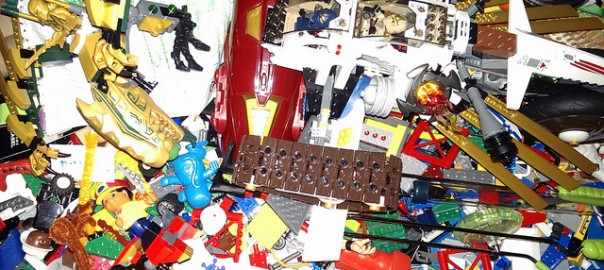Lego sets are awesome. I loved them as a kid, and now my kids love them. And that makes me love them all over again.
But Lego sets have changed.
When I was a kid, the beauty of Lego blocks was their utility as raw material that enabled invention and construction. You could buy almost any set and the raw blocks were pretty much generic and interchangeable with other sets. I used them to construct things I was passionate about, including airports, planes and spaceships. I would buy Lego sets precisely for the raw materials and to fortify my own creations.
Today, mass-marketed Lego sets seem less about invention. They have become sophisticated model and hobby sets (often co-opting blockbuster entertainment franchises). Lego blocks are less raw building blocks, and more intricate puzzles with definitive outcomes. The highly specialized pieces are perfect for planned models, though I believe their lack of interchangeability across sets discourages invention. My kids seek to stay within the lines and preserve their models indefinitely, and these delicate things, while impressive, clutter our modest home.
This is not an absolute criticism of Lego. I love how both my kids (kindergarten and first grade) dive into complex assembly plans to create their models. They get a ton of satisfaction out of it, and I’m sure there are cognitive benefits as well. Executing an intricate Lego plan is a better way for a child to spend his time versus dazing into a mind-numbing LCD screen.
However, I would love to see two things happen with Lego. First, I would love to see a return to the raw building blocks and creativity they once ensued. I’d love to see more aggressive Lego marketing on raw pieces and the ability to create one-of-a-kind things. Indeed, this is the core value of Lego, which always will remain in my heart.
Second, I appreciate the intricate, mass-marketed model sets. Instead of ownership, a better solution would be a subscription program whereby your kid rents a set to build. When completed, your kid would take a picture of the model and mail the set back in, and then receive an achievement badge and a more challenging model. They value of Lego is in the challenge and completion of the project, less so in the physical thing you’re left with at the end, to hold onto forever or submit to a dumpster. Subscription or lending programs may exist (and I’d like to try Pleygo), though they’re not widespread.
What are your experiences with Lego?
The featured photo is a picture I took of my son’s Lego table, a dizzying scene I thought resembled Jackson Pollock’s famous painting, Convergence.


love 1st pt. agree witg 2nd pt – sub model would be great for puzzles, legos and other templated toys. proven ecocomics for the sub model in movies and video games…so why not?
I think you’re right. Lego has changed. I remeber those Lego “Basic” sets with lots of raw building blocks in the ninties. At the time there were many sets including very similar blocks – less sophisticated and more universal. Those kind of blocks and sets were my favourite. Over many years my son has collected a lot of raw building blocks and now we often look for instructions for making interesting buildings on the web. Before christmas we found a great idea for the model of the melamine installation – http://blog.pulawy.com/en/building-an-unusual-factory and my son is working on it 🙂